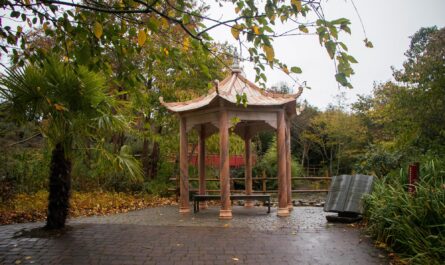The start of my journey
Outside the window the bright sun is shining, birds are singing and tree leaves are playfully rustling. On such a wonderful warm day, I decide to take a walk around Edinburgh and head to the Newhaven area. This area, also called New Harbour, is located on the River Forth. Of particular importance here is the small harbor, which today serves several small boats.

I have been interested in this area for a long time. Reading on the Internet, I learned that a society of free fishermen had been created in Niebhaven since 1572, and I also saw the walls of the preserved chesovens of St. Mary and St. James, which were built supposedly for shipyard workers.
Catherine Sinclair Fountain
Having gathered and grabbed the necessary things, I hit the road. Arriving at Ferry Road, I begin to explore the local attractions. My route begins with a walk along a cozy, shady street along small residential buildings. Walking along the Water of Leith footpath to the low steps and round the fence, I see the Catherine Sinclair fountain in the center of the small square.
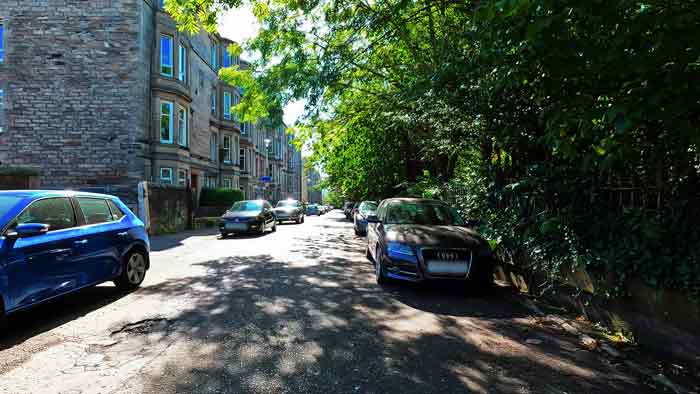
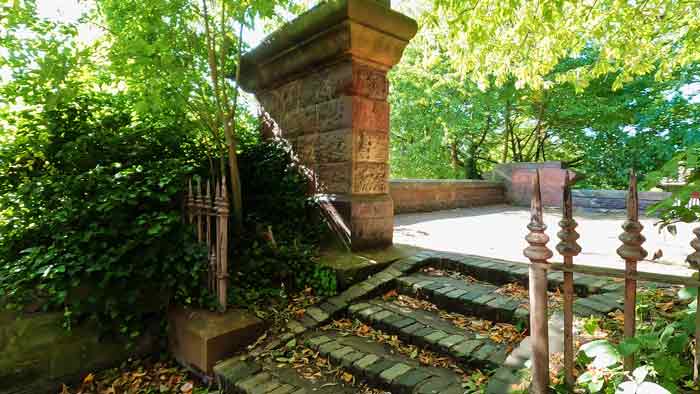
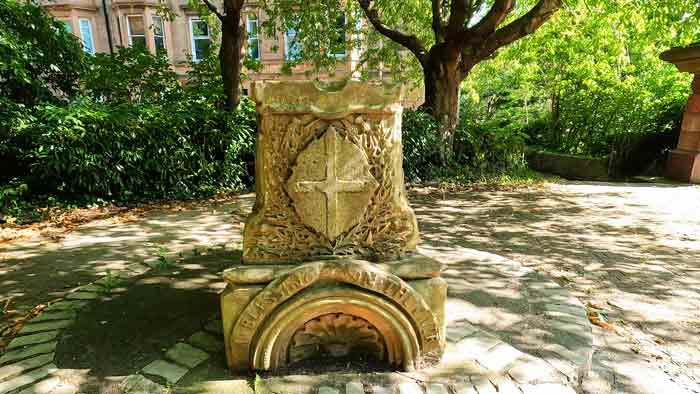
This stone structure, about 14 feet high, was presented to Edinburgh by Catherine Sinclair. The fountain was located at the junction of Lothian Road and Princes Street next to the path on the corner where St John’s Church stands. The main idea of the fountain was accessible water for public dogs and horses that passed through local streets.
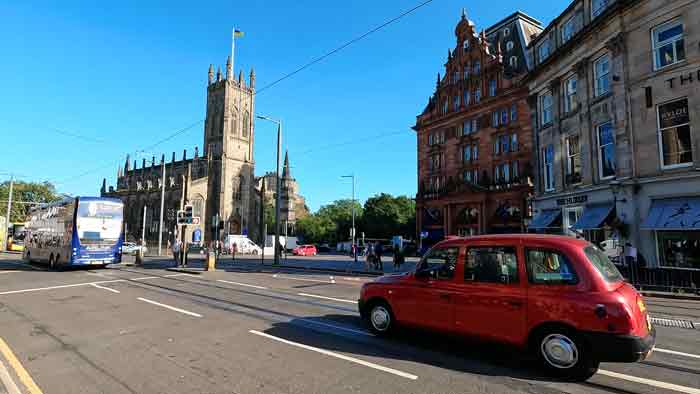
Each side of the fountain has its own inscription: “Drink and be grateful,” “Water is not only for humans, “Blessing for the liver.”
Park Victoria
After examining the fountain, I headed further down the street to meet the next attraction, namely Victoria Park. Coming out again onto the pedestrian street, I reached a sign where I saw the direction of travel and the distance to the park. At the entrance to the park, I was greeted by a forged gate and an information stand that told about this place, as well as the rules for visiting.
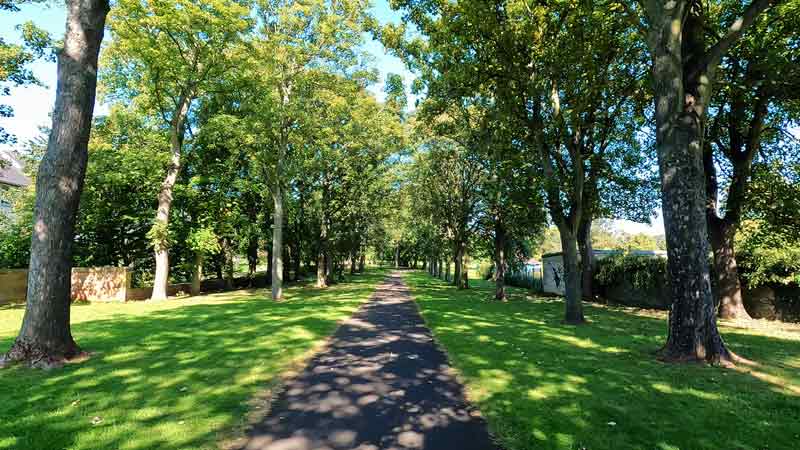
The park area is quite large. Green, evenly trimmed lawns, large, majestic trees and shrubs, paved paths and places to relax – everything here is conducive to relaxation and contemplation of natural beauty. Walking along the paths of the park, I came to the statue of King Edward VII, the eldest son of Queen Victoria. Edward took over as king after the death of his mother. He was educated at three universities: Edinburgh, Oxford and Cambridge. Soon after this, he married Alexandra, who was the eldest daughter of the King of Denmark, Christian IX.
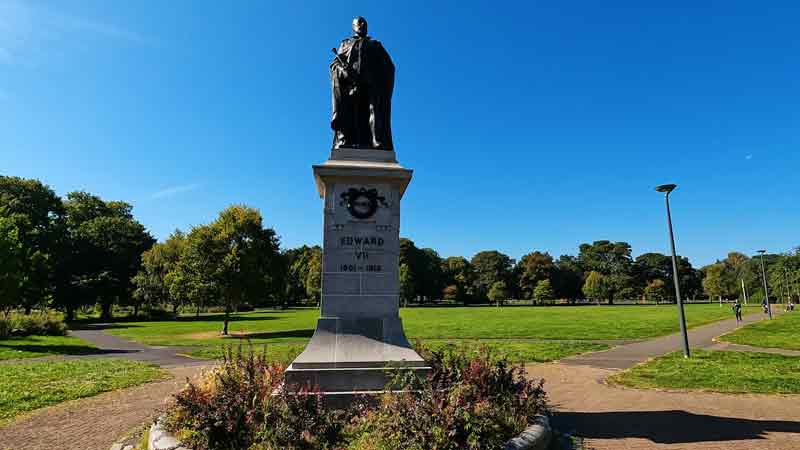
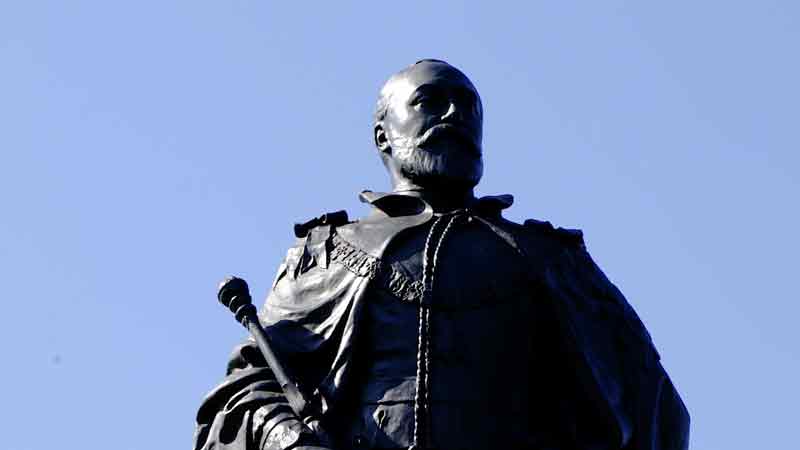
The statue has a rather impressive appearance, looks very monumental and courageous. The stone appearance of the king gives off a feeling of strength and greatness. Being here is both pleasant and exciting at the same time. It’s as if you are immersed in the era of kings, becoming part of that time.
Descent to the harbor
Having enjoyed the contemplation of the statue, I went back out into the street and began my descent into Newhaven Harbor. Walking through the streets, I noticed a very pleasant atmosphere. Local buildings are three- and four-story houses with walls made of stone. The architecture of the streets, the natural color of the facades, the paved road and sidewalks – everything looks very authentic and colorful. Here and there, building spiers and roofs made of stone or tiles are visible from behind the roofs of houses. In the warm rays of the sun, the lower city looks very welcoming and attractive.
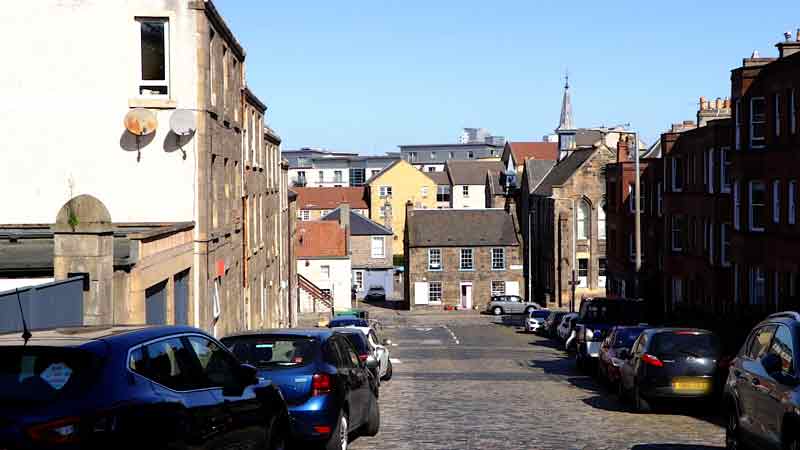
I soon reached Main Street, where there is a war memorial with Armada stone elements. The inscription on the stone states that it was erected in memory of the men and women of Newhaven who died in the World War 1939-1945.
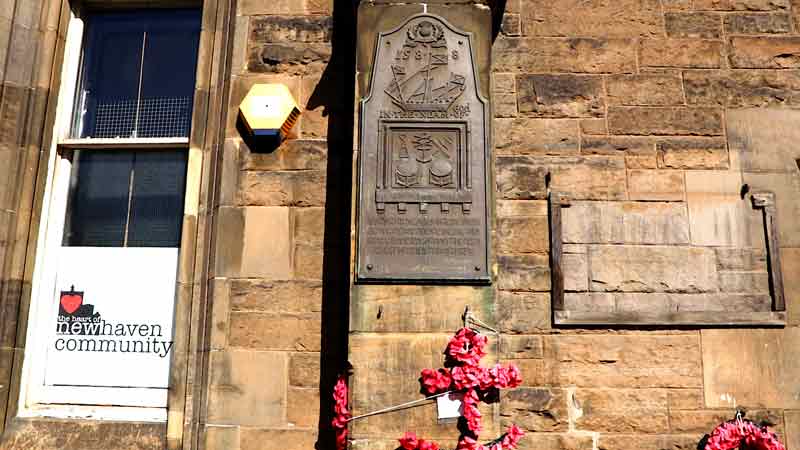
Next, I continue my acquaintance with Newhaven and go for a walk along Main Street. I can see narrow streets and paved roads, intersections and numerous shops located on the ground floors of buildings. This part of Edinburgh was once an independent fishing and shipbuilding village. The locals were called Bow-tau. Fishmongers from Nieuwen wore Flemish caps, bright vests and aprons, and spotted scarves. Women carried huge baskets of produce to fish markets. This tradition has been preserved in the city to this day.
I was very surprised and impressed by how the luxurious green crowns of trees and flowers look organically among the stone walls and paths. They bring shades of freshness to the atmosphere of the streets, filling them with colors.
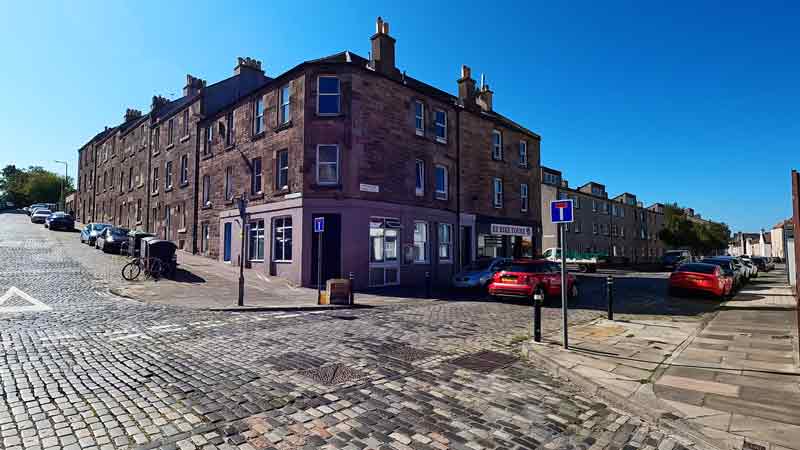
Despite the fact that I meet a large number of cars along the way, the city still looks quite original and somehow historically attractive.
Armada Stone
Turning into a cozy courtyard, I approached another famous sculpture of antiquity – the Armada Stone. The artifact is installed on the gable of the building overlooking the public garden. The stone dates back to 1588. To this day, it is not known for certain when exactly and for what reason this sculpture appeared.
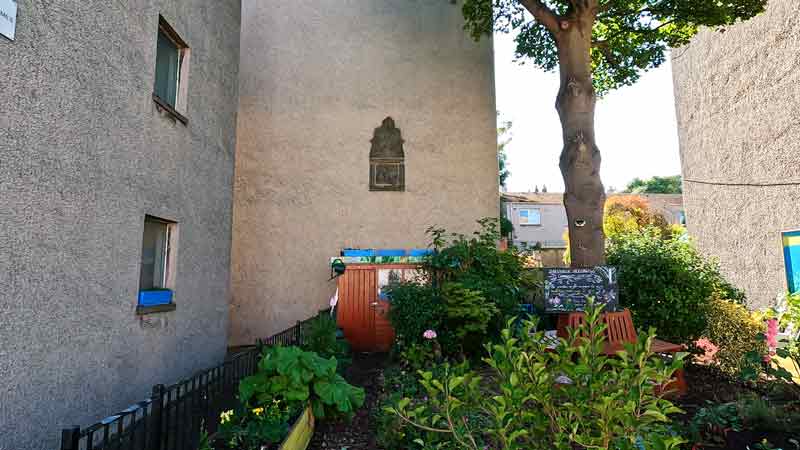
According to one version, this stone is a monument to sunken Spanish ships. After the Spanish fleet failed in an attack on the English Channel, the defeated ships sailed home in August 1588 and were caught in a fierce storm while sailing past the Firth of Forth. The surviving ships received a warm welcome from the communities along the Fort.
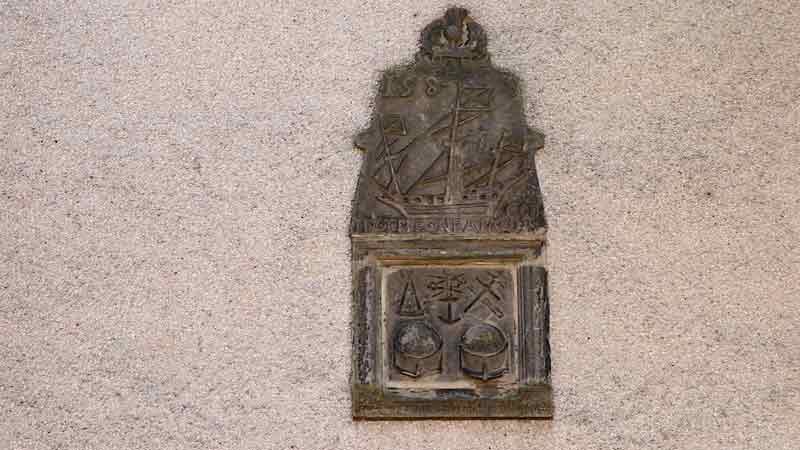
On one part of the stone there is an image of an armed merchant ship flying the Scottish flag, on the other there are globes, dividers, compasses and Jacob’s staff.
Having also examined the cozy, beautiful garden, I moved on, crossing to the other side of the street.
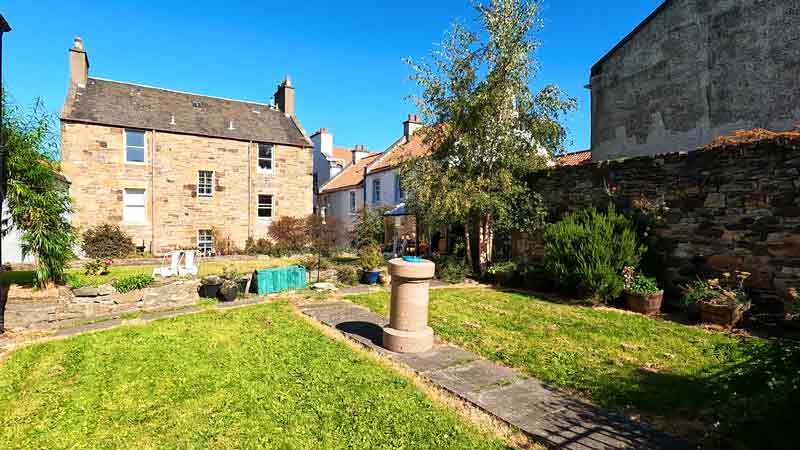
The next point on my route is the ruined chapel of St. Mary and St. James. It was built around 1508. Some of the walls have survived to this day. Until 1848, the area located inside the ruined walls was used as a burial site by the local Free Fishermen’s Society.
Newhaven Harbour
After visiting the chapel, I went to the final destination of my journey, namely Newhaven Harbor. Walking a little further along Main Street and crossing the roadway, my gaze finally opened up to a view of the sea, and indeed the entire harbor. Numerous fishing boats and pleasure boats, the cries of seagulls and a light sea breeze create a unique atmosphere in this place.
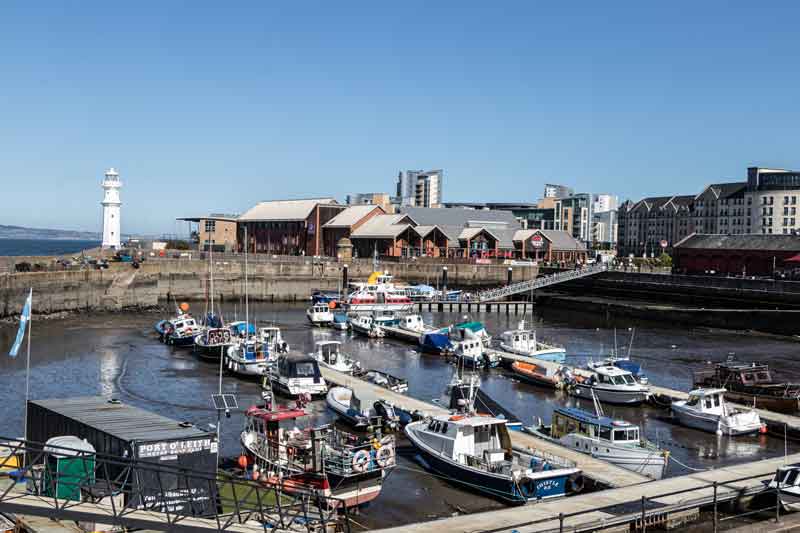
My attention was drawn to the snow-white lighthouse, shimmering in the rays of the warm sun. After going out to the embankment and walking a little past the fish restaurants and cafes, I went to the Newhaven Harbor Lighthouse, located on the northern pier of the harbour. This structure, in the form of an octagonal cast iron tower 50 feet high, was founded in 1869 and built by James Dove and Company in Edinburgh. The lighthouse completed its work in 1930.
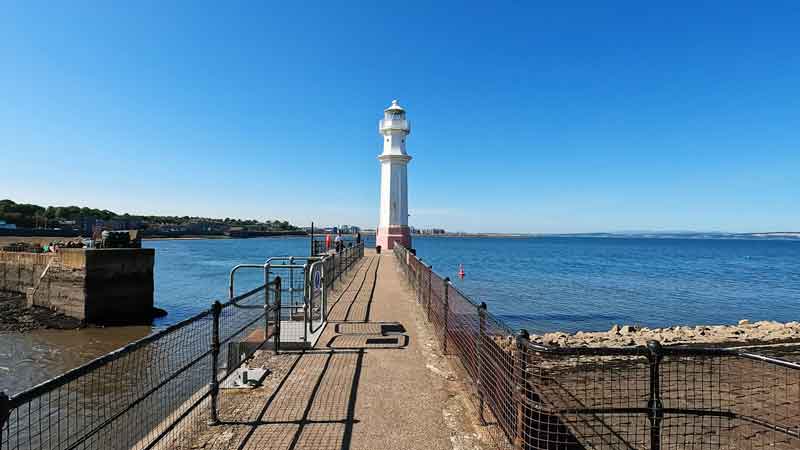
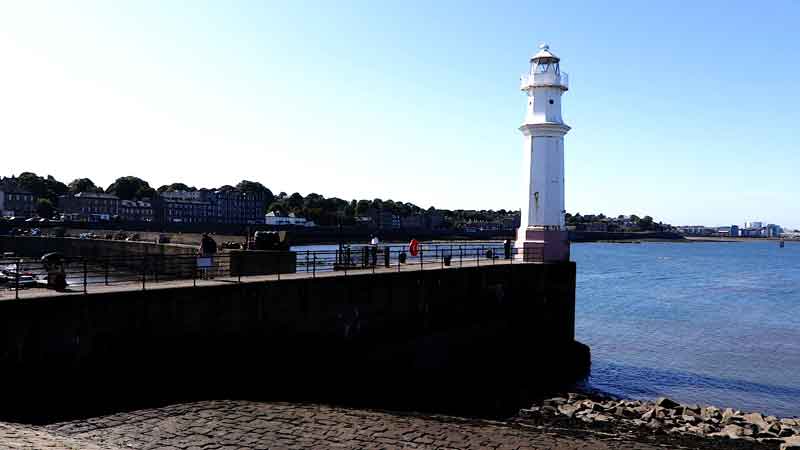
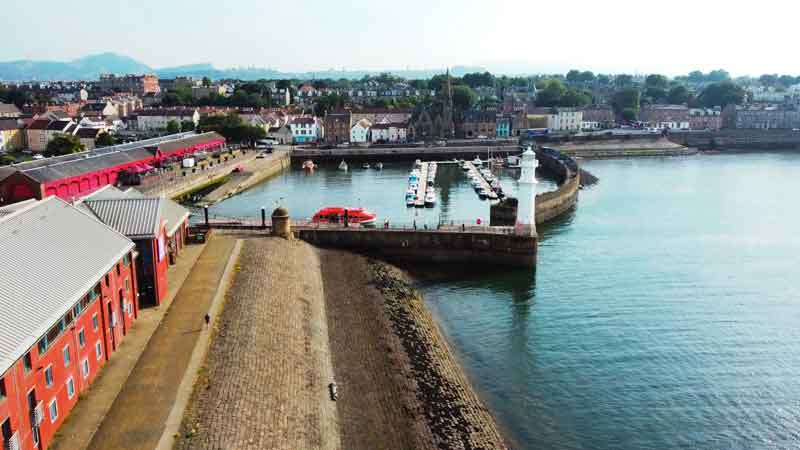
In 2018, Forth Ports equipped the lighthouse with LEDs that change color. This is done for decorative purposes.
Having examined the Lighthouse, I decided to walk a little more along the embankment to enjoy the beautiful view of the sea surface and breathe in the salty sea breeze. From this part the Harbor and the town look even more beautiful and original.
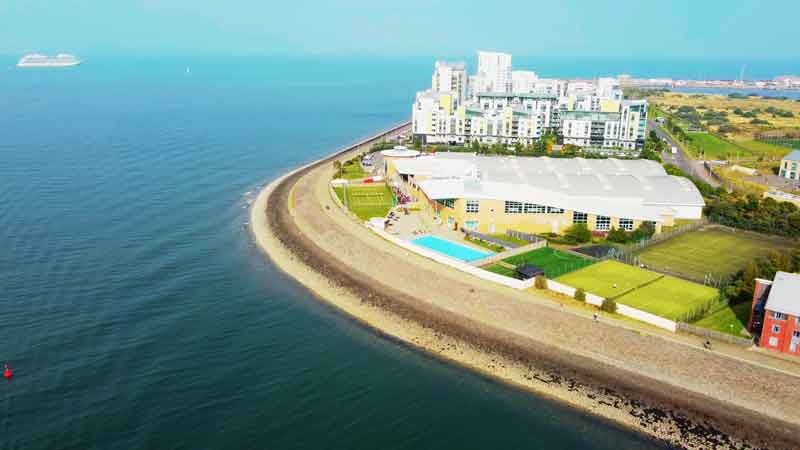
At this point, I decided to complete my acquaintance with the sights of Newhaven and headed back. Overall, the walk around the Harbor pleasantly surprised me. I received a lot of positive emotions, enjoyed beautiful views of the sea, and got acquainted with interesting historical facts.



